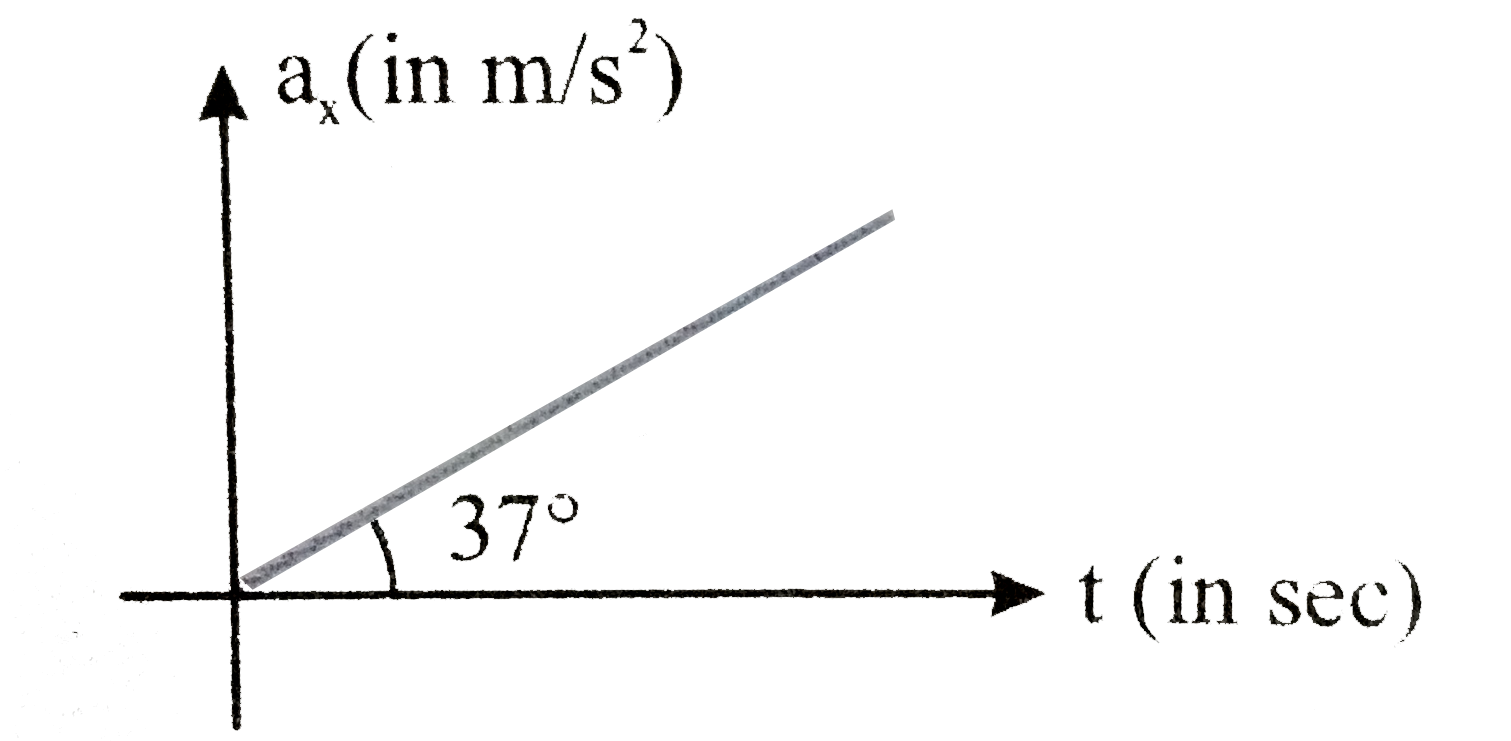The velocity of a particle of mass 1 kg is given by v=10√x the work done by the forceacting on the particle during its motion from x=4 to x=9m is
250J
300J
350J
400J
The correct Answer is:A
To solve the problem, we need to calculate the work done by the force acting on a particle as it moves from x=4 m to x=9 m, given that the velocity v of the particle is defined by the equation v=10√x.
1. Identify the given parameters:
- Mass of the particle, m=1 kg
- Velocity equation, v=10√x
2. Find the acceleration:
- We know that acceleration a can be expressed in terms of velocity v and position x using the relation:
a=vdvdx
- First, we need to differentiate v with respect to x:
v=10√x=10x1/2
- Differentiating v:
dvdx=10⋅12x−1/2=5√x
- Now substituting v and dvdx into the acceleration formula:
a=10√x⋅5√x=50m/s2
3. Calculate the force acting on the particle:
- Using Newton's second law:
F=m⋅a
- Substituting the values:
F=1kg⋅50m/s2=50N
4. Determine the displacement:
- The displacement s as the particle moves from x=4 m to x=9 m is:
s=9−4=5m
5. Calculate the work done by the force:
- Work done W is given by the formula:
W=F⋅s
- Since the force and displacement are in the same direction:
W=50N⋅5m=250J
Final Answer:
The work done by the force acting on the particle during its motion from x=4 m to x=9 m is 250 Joules.
- Mass of the particle, m=1 kg
- Velocity equation, v=10√x
- We know that acceleration a can be expressed in terms of velocity v and position x using the relation:
a=vdvdx
- First, we need to differentiate v with respect to x:
v=10√x=10x1/2
- Differentiating v:
dvdx=10⋅12x−1/2=5√x
- Now substituting v and dvdx into the acceleration formula:
a=10√x⋅5√x=50m/s2
- Using Newton's second law:
F=m⋅a
- Substituting the values:
F=1kg⋅50m/s2=50N
- The displacement s as the particle moves from x=4 m to x=9 m is:
s=9−4=5m
- Work done W is given by the formula:
W=F⋅s
- Since the force and displacement are in the same direction:
W=50N⋅5m=250J
The work done by the force acting on the particle during its motion from x=4 m to x=9 m is 250 Joules.
Topper's Solved these Questions
Similar Questions
The velocity (v) of a pariticle of mass m moving along x-axls is given by v=b√x, where b is a constant. Find work done by the force acting on the particle during its motion from x=0 to x=4m.
View SolutionThe velocity (v) of a particle of mass m moving along x-axis is given by v=α√x, where α is a constant. Find work done by force acting on particle during its motion from x=0 to x=2m :-
View Solution
Knowledge Check
A force F is related to the position of a particle by the relation F=(10x2)N . Find the work done by the force when the particle moves from x=2m→x=4m.
A563 JB560 JC5603 JD3560 J
In the figure the variation of components of acceleration of a particle of mass is 1kg is shown w.r.t. time. The initial velocity of the particle is →u=(−3i+4j)m/s. The total work done by the resultant force on the particle in time from t=0 to t=4 seconds is :
 .
.
View SolutionForce acting on a particle varies with displacement as shown is Fig. Find the work done by this force on the particle from x=−4m to x = + 4m.
 .
.
View SolutionA particle of mass m moves with a variable velocity v, which changes with distance covered x along a straight line as v=k√x, where k is a positive constant. The work done by all the forces acting on the particle, during the first t seconds is
View SolutionDisplacement of a particle of mass 2 kg varies with time as s=(2t2−2t+10)m. Find total work done on the particle in a time interval from t=0 to t=2s.
View SolutionIf the velocity of a particle is given by v=(180−16x)12ms, then its acceleration will be
View SolutionIf the velocity of a particle is given by v=(180−16x)12ms, then its acceleration will be
View SolutionPosition time graph of a particle of mass 2 kg is shown in figrure. Total work done on the particle from t=0 to t=4s is

View Solution
